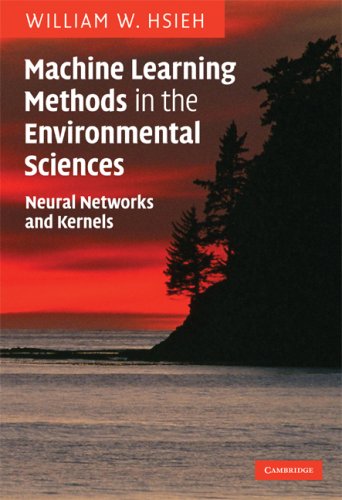(Ebook) Machine learning methods in the environmental sciences by Hsieh W.W. ISBN 9780521791922, 0521791928
Machine learning methods originated from artificial intelligence and are now used in various fields in environmental sciences today. This is the first single-authored textbook providing a unified treatment of machine learning methods and their applications in the environmental sciences. Due to their powerful nonlinear modeling capability, machine learning methods today are used in satellite data processing, general circulation models(GCM), weather and climate prediction, air quality forecasting, analysis and modeling of environmental data, oceanographic and hydrological forecasting, ecological modeling, and monitoring of snow, ice and forests. The book includes end-of-chapter review questions and an appendix listing web sites for downloading computer code and data sources. A resources website containing datasets for exercises, and password-protected solutions are available. The book is suitable for first-year graduate students and advanced undergraduates. It is also valuable for researchers and practitioners in environmental sciences interested in applying these new methods to their own work. Preface Excerpt Machine learning is a major subfield in computational intelligence (also called artificial intelligence). Its main objective is to use computational methods to extract information from data. Neural network methods, generally regarded as forming the first wave of breakthrough in machine learning, became popular in the late 1980s, while kernel methods arrived in a second wave in the second half of the 1990s. This is the first single-authored textbook to give a unified treatment of machine learning methods and their applications in the environmental sciences. Machine learning methods began to infiltrate the environmental sciences in the 1990s. Today, thanks to their powerful nonlinear modeling capability, they are no longer an exotic fringe species, as they are heavily used in satellite data processing, in general circulation models (GCM), in weather and climate prediction, air quality forecasting, analysis and modeling of environmental data, oceanographic and hydrological forecasting, ecological modeling, and in the monitoring of snow, ice and forests, etc. This book presents machine learning methods and their applications in the environmental sciences (including satellite remote sensing, atmospheric science, climate science, oceanography, hydrology and ecology), written at a level suitable for beginning graduate students and advanced undergraduates. It is also valuable for researchers and practitioners in environmental sciences interested in applying these new methods to their own work. Chapters 1-3, intended mainly as background material for students, cover the standard statistical methods used in environmental sciences. The machine learning methods of chapters 4-12 provide powerful nonlinear generalizations for many of these standard linear statistical methods. End-of-chapter review questions are included, allowing readers to develop their problem-solving skills and monitor their understanding of the material presented. An appendix lists websites available for downloading computer code and data sources. A resources website is available containing datasets for exercises, and additional material to keep the book completely up-to-date. About the Author WILLIAM W. HSIEH is a Professor in the Department of Earth and Ocean Sciences and in the Department of Physics and Astronomy, as well as Chair of the Atmospheric Science Programme, at the University of British Columbia. He is internationally known for his pioneering work in developing and applying machine learning methods in environmental sciences. He has published over 80 peer-reviewed journal publications covering areas of climate variability, machine learning, oceanography, atmospheric science and hydrology.
*Free conversion of into popular formats such as PDF, DOCX, DOC, AZW, EPUB, and MOBI after payment.


